The Future of Quantum Cryptography in Research
In today's rapidly evolving digital landscape, the importance of securing data cannot be overstated. With cyber threats lurking around every corner, researchers and organizations are constantly seeking innovative solutions to protect sensitive information. Enter quantum cryptography, a groundbreaking technology that leverages the principles of quantum mechanics to create secure communication channels. This article explores the advancements and potential applications of quantum cryptography in research, highlighting its significance in ensuring privacy and security in an increasingly interconnected world.
So, what exactly is quantum cryptography? At its core, it is a method of secure communication that uses quantum mechanics to encrypt messages in a way that is theoretically unbreakable. Unlike traditional cryptographic methods, which rely on mathematical algorithms, quantum cryptography utilizes the unique properties of quantum bits (qubits) to ensure that any attempt to eavesdrop on the communication will disturb the quantum state, alerting the parties involved to the breach. This revolutionary approach not only enhances security but also paves the way for new possibilities in data protection.
As researchers delve deeper into the realm of quantum cryptography, its applications are becoming increasingly diverse. From telecommunications to computer science and information security, quantum cryptography is transforming how we approach data protection. For instance, in the field of telecommunications, quantum key distribution (QKD) allows two parties to securely share encryption keys, ensuring that their communications remain confidential. This is particularly vital in an age where data breaches are rampant, and personal information is at risk.
The telecommunications industry is experiencing a significant revolution due to quantum cryptography. Imagine a world where your phone calls and messages are impervious to eavesdropping. With quantum cryptography, this is becoming a reality. By providing secure channels for data transmission, quantum cryptography reduces the risk of unauthorized access and data breaches. This means that sensitive information, whether it be personal conversations or corporate data, can be transmitted with confidence, knowing that it is protected by the laws of quantum mechanics.
Several case studies demonstrate the effectiveness of quantum cryptography in telecommunications. For example, the Quantum Network in China has successfully implemented QKD to secure communications between government agencies, ensuring that sensitive information remains confidential. Similarly, companies like ID Quantique are providing quantum cryptography solutions that protect financial transactions and private communications. These real-world implementations showcase the reliability and effectiveness of quantum cryptography in safeguarding sensitive information.
Looking ahead, the potential advancements in telecommunications through quantum cryptography are immense. Researchers are exploring the development of more secure communication networks and protocols that leverage quantum technology. As this field continues to evolve, we can expect to see breakthroughs that will redefine how we think about data security. Imagine a future where every online transaction, phone call, and email is encrypted with a level of security that is virtually unbreakable. This is the promise that quantum cryptography holds for the future.
The implications of quantum cryptography on data security are profound. In an age where cyber threats are becoming increasingly sophisticated, the ability to safeguard sensitive information is paramount. Quantum cryptography not only protects against traditional hacking methods but also offers resilience against potential quantum computing attacks. As quantum computers become more powerful, they could potentially break conventional encryption methods. Quantum cryptography, however, is designed to withstand these threats, making it an essential tool for protecting data in the future.
Despite its promise, quantum cryptography faces several challenges that must be addressed before it can be widely adopted. One of the primary hurdles is the technological limitations that impede its implementation. Specialized equipment and infrastructure are required to establish quantum communication channels, which can be a significant barrier for many organizations.
Exploring the technological challenges reveals that the need for advanced hardware, such as single-photon detectors and quantum repeaters, can be a significant roadblock. These components are essential for maintaining the integrity of quantum communication but are often expensive and complex to deploy. As research continues, the development of more accessible quantum technologies will be crucial for overcoming these barriers.
Another significant challenge is the financial implications of implementing quantum cryptography in research and industry. The initial investment required for quantum technology can be daunting, and ongoing maintenance costs may deter organizations from adopting this cutting-edge solution. However, as the technology matures and becomes more mainstream, we can expect costs to decrease, making quantum cryptography a feasible option for a broader range of applications.
- What is quantum cryptography? Quantum cryptography is a secure communication method that uses the principles of quantum mechanics to encrypt and protect data.
- How does quantum cryptography differ from traditional cryptography? Unlike traditional methods that rely on mathematical algorithms, quantum cryptography uses quantum bits (qubits) to ensure secure communication.
- What are the current applications of quantum cryptography? Quantum cryptography is currently being applied in telecommunications, computer science, and information security.
- What challenges does quantum cryptography face? The main challenges include technological barriers and high implementation costs.
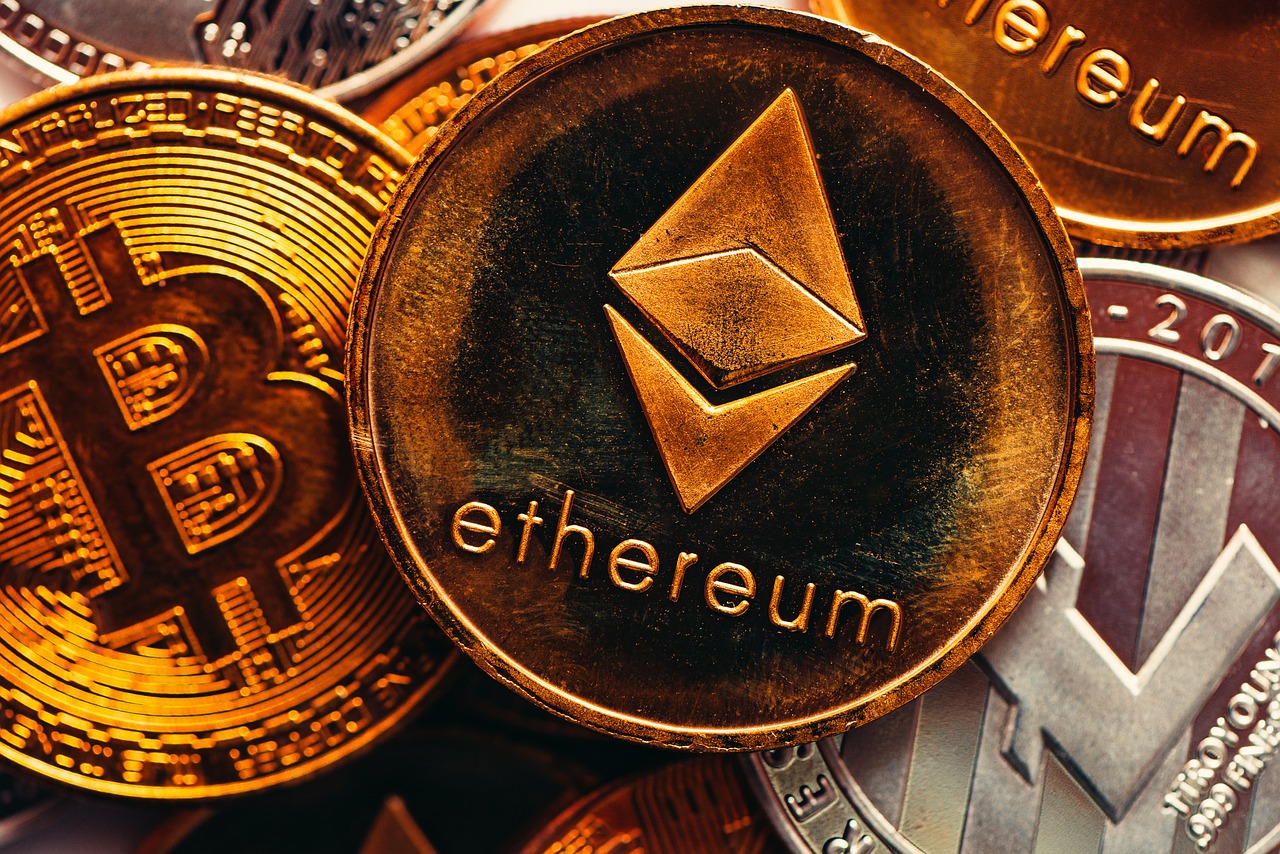
Understanding Quantum Cryptography
Quantum cryptography is not just a buzzword; it's a revolutionary approach to securing data that harnesses the bizarre and fascinating principles of quantum mechanics. Imagine a world where your data is so secure that even the most sophisticated hackers can't touch it. That's the promise that quantum cryptography holds. But what does it really mean? At its core, quantum cryptography utilizes the behavior of quantum particles, such as photons, to create a secure communication channel. Unlike traditional cryptographic methods, which rely on mathematical algorithms, quantum cryptography is based on the laws of physics, making it inherently more secure.
One of the key concepts in quantum cryptography is quantum key distribution (QKD). This process allows two parties to generate a shared, secret random key that can be used to encrypt and decrypt messages. The beauty of QKD lies in its ability to detect eavesdropping. If a third party tries to intercept the key, the quantum state of the particles being transmitted is altered, alerting the communicating parties to the breach. This is akin to having a security system that not only locks your doors but also informs you if someone is trying to pick the lock!
So, how does quantum cryptography differ from traditional methods? Traditional cryptography relies on complex mathematical problems that, while difficult to solve, can still be cracked with enough computational power or time. In contrast, quantum cryptography offers a level of security that is theoretically unbreakable. To illustrate this, consider the following table that compares traditional cryptography with quantum cryptography:
| Feature | Traditional Cryptography | Quantum Cryptography |
|---|---|---|
| Security Basis | Mathematical Algorithms | Quantum Mechanics |
| Eavesdropping Detection | Not possible | Possible |
| Theoretical Security Level | Finite | Infinite |
This table highlights the fundamental differences between these two approaches. While traditional cryptography may suffice for many applications, it is becoming increasingly vulnerable with the rise of quantum computing, which threatens to break many existing cryptographic systems. In contrast, quantum cryptography stands as a robust alternative, offering a secure means of communication in an era where data breaches are alarmingly common.
In summary, understanding quantum cryptography is crucial as we move toward a more digital and interconnected world. Its ability to provide a secure communication framework not only enhances data privacy but also fosters trust in the digital systems we rely on daily. As researchers and organizations continue to explore its potential, the future of secure communications looks promising, paving the way for innovations that could reshape how we think about data security.

Current Applications in Research
Quantum cryptography is making waves in various research fields, and its applications are as diverse as they are groundbreaking. Imagine a world where data is transmitted with the utmost security, where eavesdroppers are left in the dust, and where privacy is not just a luxury but a standard. This is the promise of quantum cryptography, and it's already being harnessed in several sectors. Let's dive into some of the key areas where quantum cryptography is currently being applied, showcasing its transformative potential.
One of the most significant areas where quantum cryptography is currently making an impact is in the field of telecommunications. With the rise of digital communication, the demand for secure data transmission has skyrocketed. Traditional cryptographic methods, while effective, are increasingly vulnerable to sophisticated cyber threats. Quantum cryptography, on the other hand, leverages the principles of quantum mechanics to create secure channels for data transmission. This means that any attempt to intercept the data can be detected almost instantaneously. In essence, it's like sending a message in a bottle that is impervious to prying eyes—if someone tries to peek, the message is destroyed!
In telecommunications, quantum key distribution (QKD) is a pioneering application. It allows two parties to generate a shared, secret random key that can be used for encrypting messages. The beauty of QKD lies in its security: any attempt to measure the quantum state of the transmitted particles will disturb them, alerting the parties involved. This revolutionary approach is paving the way for a new era of secure communications. Imagine a future where your phone calls and online transactions are protected by the laws of physics rather than just algorithms!
Several real-world implementations of quantum cryptography in telecommunications are already in progress. For instance, in 2020, a team of researchers successfully demonstrated a quantum-secured communication link over a distance of 100 kilometers. This achievement not only showcased the feasibility of quantum cryptography in real-world scenarios but also highlighted its potential for widespread adoption. Such breakthroughs are crucial for industries that handle sensitive data, such as finance and healthcare, where the stakes are incredibly high.
Another notable example is the ongoing collaboration between major telecommunications companies and research institutions to develop quantum networks. These networks aim to create a framework where quantum cryptography can be seamlessly integrated into existing communication infrastructures. By doing so, they hope to enhance the security of data transmission significantly, making it nearly impossible for unauthorized entities to access confidential information.
Looking ahead, the future of quantum cryptography in telecommunications is nothing short of exciting. Researchers are actively exploring ways to expand the range and efficiency of quantum communication systems. For instance, advancements in satellite-based quantum communication could allow for secure data transmission over long distances, even across continents. This would not only enhance global connectivity but also ensure that sensitive information remains protected no matter where it travels.
Moreover, the development of more robust quantum protocols promises to improve the overall security of communication networks. As these technologies evolve, we can expect to see a shift from traditional security measures to quantum-based solutions, fundamentally changing how we think about data protection.
In summary, the current applications of quantum cryptography in research are paving the way for a more secure digital landscape. From telecommunications to information security, the transformative potential of this technology is becoming increasingly apparent. As we continue to explore and develop these applications, we are not just enhancing data security; we are redefining the very nature of trust in the digital age.
- What is quantum cryptography? Quantum cryptography is a method of secure communication that uses the principles of quantum mechanics to protect data.
- How does quantum key distribution work? QKD allows two parties to generate a shared secret key that can be used for encrypting messages, ensuring that any interception attempts are detected.
- What are the current applications of quantum cryptography? Quantum cryptography is currently being applied in telecommunications, computer science, and information security, among other fields.
- What challenges does quantum cryptography face? Some challenges include technological barriers, high implementation costs, and the need for specialized infrastructure.
- What does the future hold for quantum cryptography? The future of quantum cryptography looks promising, with potential advancements in secure communication networks and protocols.
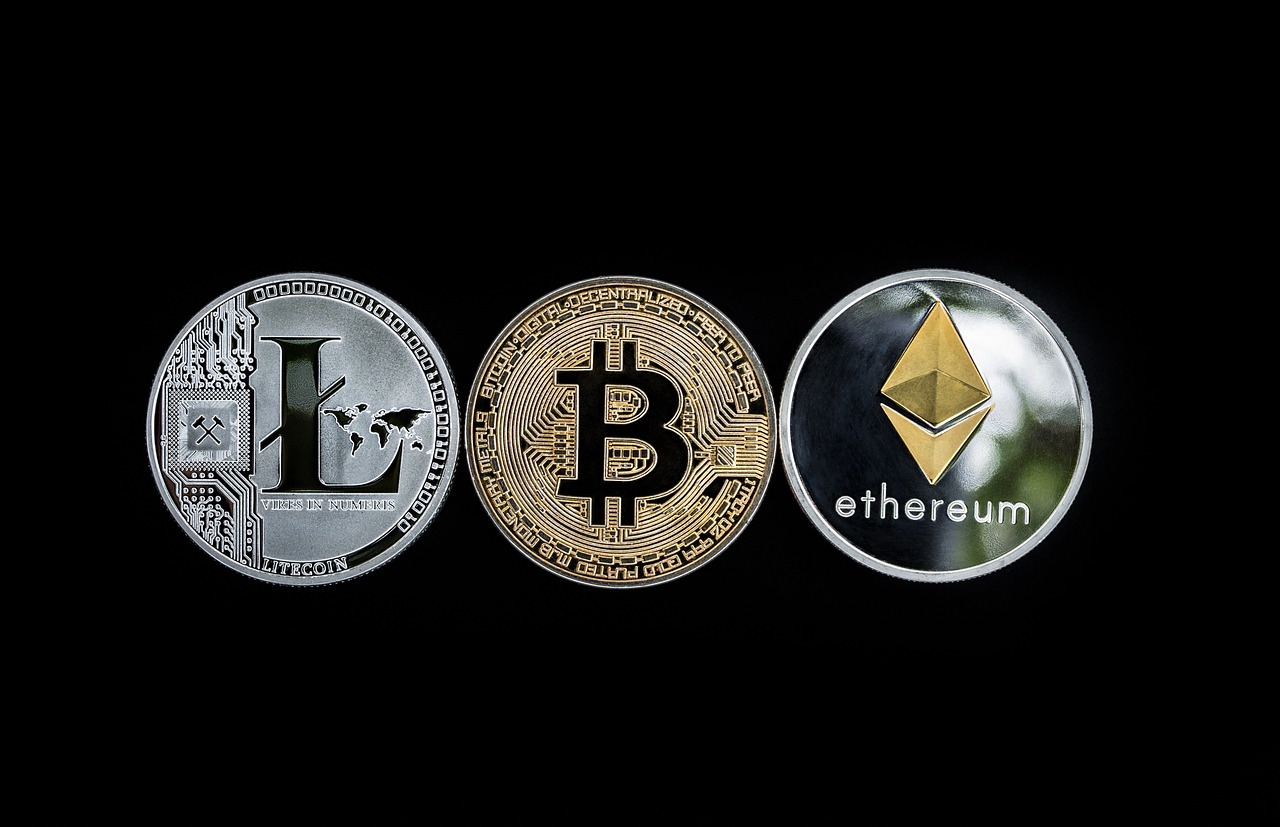
Telecommunications Advancements
In the realm of telecommunications, quantum cryptography is not just a buzzword; it's a revolutionary force reshaping how we think about secure data transmission. Imagine a world where your conversations, financial transactions, and sensitive information are shielded from prying eyes, even in the digital age where data breaches are alarmingly common. This is the promise of quantum cryptography, which utilizes the principles of quantum mechanics to create unbreakable encryption methods.
The core of quantum cryptography lies in its ability to detect eavesdropping. Traditional methods of encryption rely on complex algorithms that can be cracked given enough time and computational power. In contrast, quantum cryptography employs the concept of quantum key distribution (QKD). This technique allows two parties to generate a shared, secret random key that is used to encrypt and decrypt messages. The beauty of QKD is that any attempt to intercept the key will disturb the quantum states of the particles being transmitted, alerting the parties involved to the presence of an intruder.
Moreover, the advancements in quantum cryptography have led to the development of secure communication channels that are practically immune to hacking. For instance, researchers have successfully implemented quantum communication networks that span vast distances, paving the way for a new era of secure telecommunications. These networks utilize a variety of technologies, including quantum repeaters, which extend the distance over which quantum information can be reliably transmitted. This is akin to building a bridge over a vast canyon, allowing secure communication between two distant points without the risk of interception.
To illustrate the significant impact of quantum cryptography on telecommunications, consider the following table that showcases some of the key advancements:
| Advancement | Description | Impact |
|---|---|---|
| Quantum Key Distribution (QKD) | A method for secure communication that uses quantum mechanics to distribute encryption keys. | Provides unbreakable security against eavesdropping. |
| Quantum Repeaters | Devices that extend the range of quantum communication by overcoming distance limitations. | Facilitates long-distance secure communication. |
| Satellite-Based Quantum Communication | Utilizing satellites to transmit quantum information globally. | Enables worldwide secure communication networks. |
As we look to the future, the potential of quantum cryptography in telecommunications is staggering. Researchers are exploring the integration of quantum technologies with existing communication infrastructures, which could lead to the development of more robust and secure communication protocols. Imagine a future where your phone calls and online transactions are protected by the laws of physics, making unauthorized access virtually impossible. This isn't just a dream; it's a rapidly approaching reality.
In conclusion, the advancements in quantum cryptography are not only transforming telecommunications but also setting the stage for a more secure digital future. As we continue to explore and implement these technologies, the implications for privacy and data security are profound. With quantum cryptography, we are on the brink of a new era where our communications can be as secure as we need them to be, paving the way for innovations that will benefit both individuals and organizations alike.
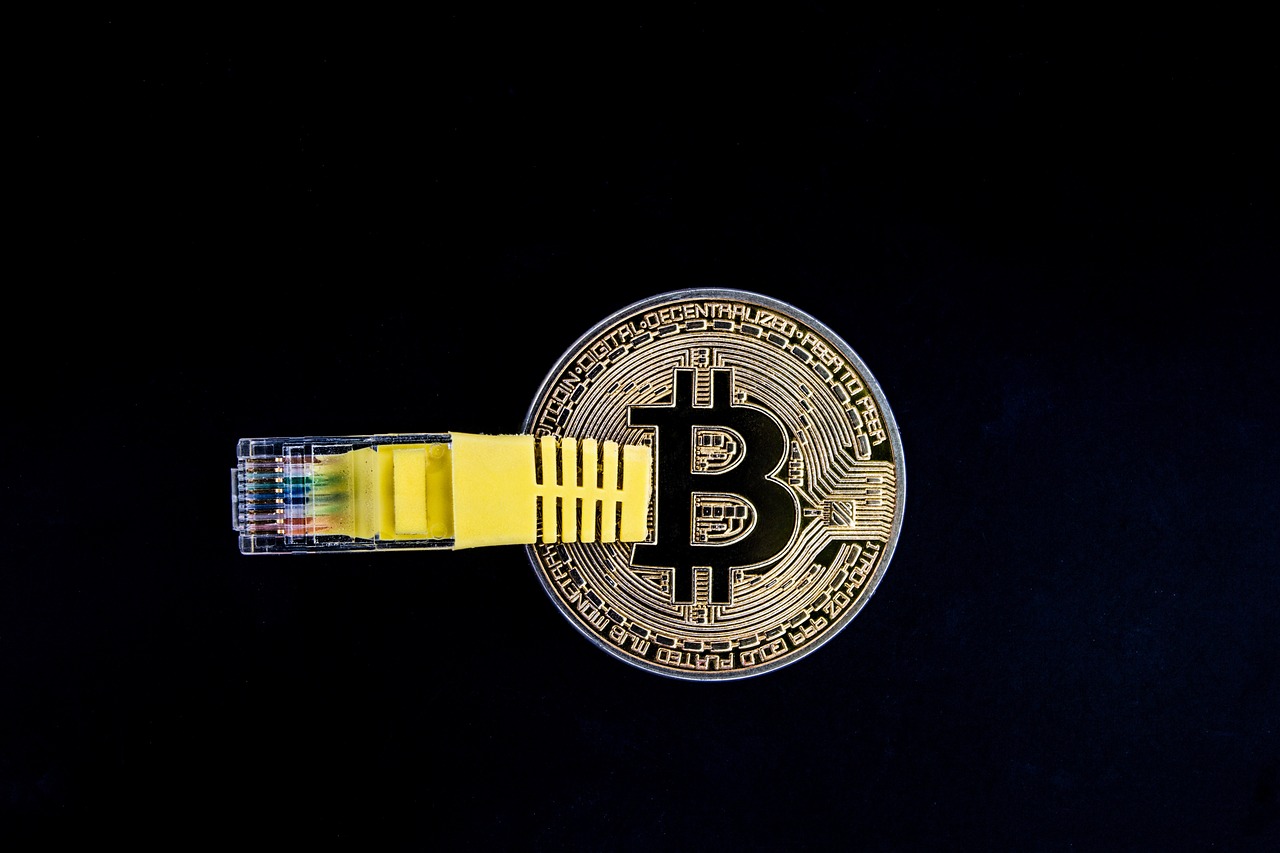
Real-World Implementations
In the realm of quantum cryptography, real-world implementations are not just theoretical musings; they are tangible breakthroughs that are reshaping how we think about data security. One of the most notable examples comes from the telecommunications sector, where quantum key distribution (QKD) has been successfully deployed to create secure communication channels. Imagine a scenario where two parties can exchange sensitive information without the fear of eavesdroppers lurking in the shadows. This is precisely what QKD offers, utilizing the principles of quantum mechanics to ensure that any attempt to intercept the communication would be immediately detectable.
For instance, in 2017, a groundbreaking project known as the Quantum Network was launched in China. This initiative connected multiple cities, including Beijing and Shanghai, through a fiber-optic network utilizing quantum cryptography. The network operates on the principle that any unauthorized attempts to access the data would disturb the quantum states of the particles being transmitted, alerting the communicating parties to potential breaches. This implementation has not only demonstrated the feasibility of quantum cryptography in real-world applications but has also set a benchmark for future developments in secure communications.
Moreover, organizations are increasingly investing in quantum cryptography to safeguard their data. For example, several banks and financial institutions are exploring quantum technologies to protect transactions and sensitive client information. By integrating quantum cryptographic systems, these institutions aim to enhance their defenses against the ever-evolving landscape of cyber threats. The security provided by quantum cryptography is akin to having a digital fortress; it ensures that even the most determined attackers face insurmountable challenges when trying to breach the defenses.
To further illustrate the practical applications of quantum cryptography, let’s consider a few key sectors where it has made a significant impact:
- Healthcare: Hospitals and research facilities are beginning to use quantum encryption to protect patient data and sensitive research findings, ensuring compliance with stringent regulations like HIPAA.
- Government: National security agencies are exploring quantum cryptography to secure communications related to defense and intelligence, where data integrity is paramount.
- Cloud Computing: As more businesses migrate to cloud services, quantum cryptography is being integrated to secure data stored remotely, providing peace of mind against potential breaches.
In summary, the real-world implementations of quantum cryptography are paving the way for a more secure digital landscape. As organizations continue to embrace this technology, we can expect to see a ripple effect across various sectors, enhancing not only data security but also fostering trust among users. The journey of quantum cryptography is just beginning, and its potential to revolutionize the way we communicate securely is immense.
Q1: What is quantum cryptography?
A: Quantum cryptography is a method of secure communication that uses the principles of quantum mechanics to encrypt data, making it virtually unbreakable.
Q2: How does quantum key distribution work?
A: Quantum key distribution (QKD) allows two parties to generate a shared, secret random key, which can then be used for encrypted communication. Any attempt to intercept the key will disturb the quantum states, alerting the parties involved.
Q3: What are the challenges of implementing quantum cryptography?
A: Some challenges include the need for specialized equipment, high costs, and the current limitations in technology that make widespread adoption difficult.
Q4: Where is quantum cryptography currently being used?
A: It is being used in various fields such as telecommunications, healthcare, finance, and government sectors to secure sensitive data.
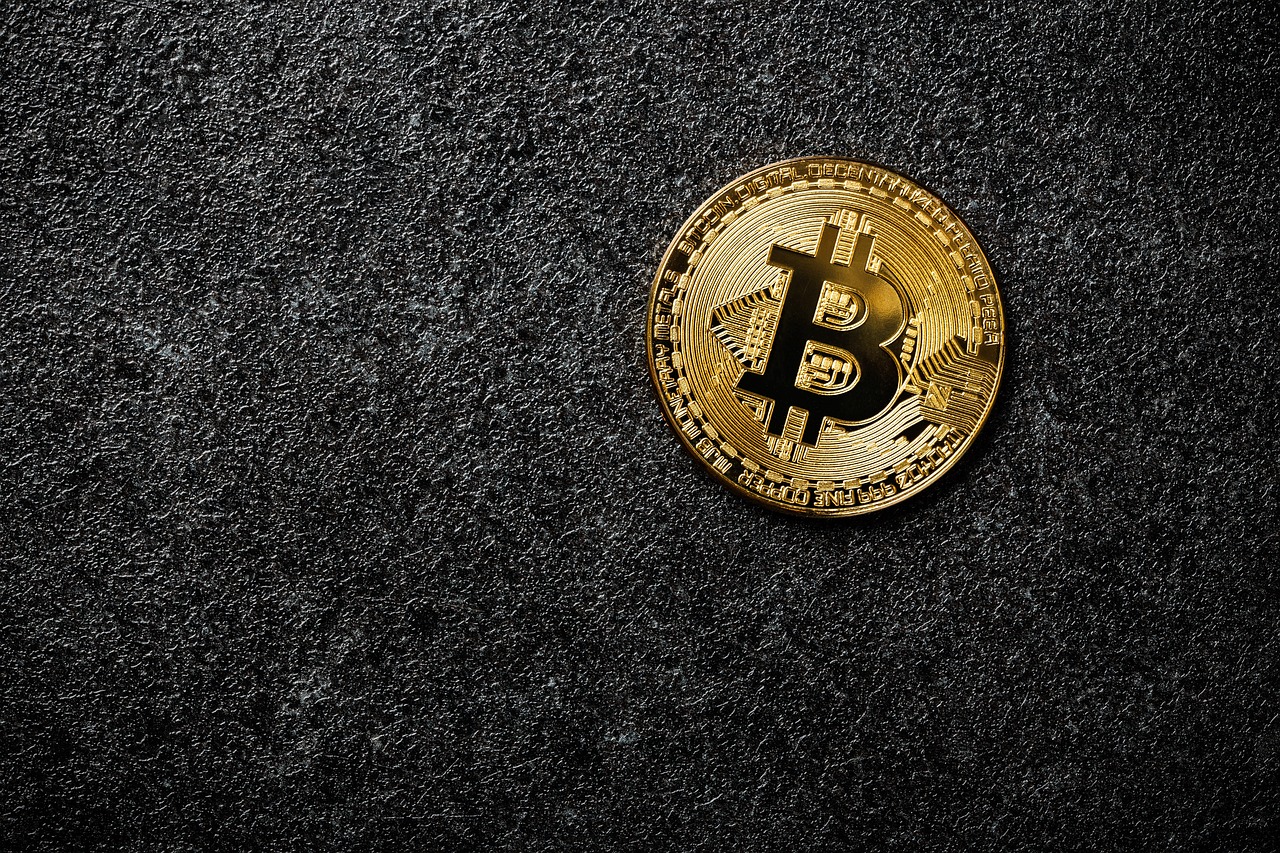
Future Prospects
The future of quantum cryptography is as bright as a supernova, bursting with potential to revolutionize how we secure our digital communications. As we stand on the brink of a quantum computing era, the implications for telecommunications and data privacy are profound. Imagine a world where sensitive information can be transmitted without the fear of interception—this is not just a dream but a tangible reality that quantum cryptography is paving the way for.
One of the most exciting prospects is the development of quantum key distribution (QKD), which allows two parties to generate a shared, secret random key, known only to them. This technology can fundamentally alter the landscape of secure communications. By utilizing the principles of quantum mechanics, any attempt at eavesdropping would be immediately detectable, alerting the parties involved to potential threats. As this technology matures, we can expect to see its integration into existing communication infrastructures, providing a robust shield against cyber threats.
Furthermore, as quantum technologies advance, we anticipate the emergence of more sophisticated quantum protocols that will enhance security measures across various sectors. For instance, in finance, quantum cryptography could secure transactions and protect sensitive financial data from cybercriminals. In healthcare, it could safeguard patient records, ensuring that personal information remains confidential. The possibilities are endless, and industries are beginning to take notice.
However, the journey toward widespread adoption is not without its challenges. The development of quantum repeaters is crucial for long-distance communication. These devices will enable quantum signals to be transmitted over greater distances without loss of integrity, making quantum networks more practical and accessible. Researchers are actively working on overcoming the current limitations of quantum repeaters, which could drastically improve the feasibility of quantum communication on a global scale.
Moreover, as we look to the future, we can expect to see an increase in collaborative efforts between governments, academia, and private sectors. These partnerships will be essential in driving research, funding, and the establishment of standards that will govern the use of quantum cryptography. By pooling resources and expertise, stakeholders can accelerate the development and deployment of quantum technologies, ensuring that we harness their full potential.
In conclusion, the future of quantum cryptography is not just a fleeting trend but a fundamental shift in how we approach data security. With ongoing advancements and a commitment to overcoming existing challenges, we are on the cusp of a new era in secure communications. As we embrace this technology, we will not only enhance our current systems but also build a foundation for a safer digital future.
- What is quantum cryptography? Quantum cryptography uses the principles of quantum mechanics to create secure communication channels that are theoretically immune to eavesdropping.
- How does quantum key distribution work? Quantum key distribution allows two parties to generate a shared secret key using quantum mechanics, ensuring that any attempt to intercept the key will be detected.
- What are the main challenges facing quantum cryptography? The primary challenges include technological barriers, such as the need for specialized equipment, and high implementation costs that may limit adoption.
- How can quantum cryptography impact industries? It can significantly enhance data security across various sectors, including finance, healthcare, and telecommunications, by providing robust protection against cyber threats.

Impact on Data Security
In today's digital landscape, where data breaches and cyber threats loom large, the importance of robust security measures cannot be overstated. Quantum cryptography emerges as a beacon of hope, offering unprecedented levels of security for sensitive information. By harnessing the principles of quantum mechanics, it not only protects data during transmission but also ensures that any attempt to intercept it is detectable. Imagine sending a message that not only reaches its destination but also alerts you if someone tries to eavesdrop. This is the transformative power of quantum cryptography.
One of the most compelling aspects of quantum cryptography is its ability to create secure communication channels that are virtually immune to traditional hacking methods. Unlike classical cryptographic systems, which rely on mathematical algorithms that can be broken with enough computational power, quantum cryptography leverages the fundamental properties of quantum particles. For instance, the act of measuring a quantum state changes it, making it impossible for an intruder to access the data without being detected. This principle is known as quantum key distribution (QKD), and it forms the backbone of quantum cryptographic systems.
Moreover, the implications for data security extend beyond mere encryption. As organizations increasingly migrate to cloud-based solutions and the Internet of Things (IoT), the potential attack vectors multiply. Quantum cryptography offers a robust framework to safeguard data across these platforms. For example, in a world where data is transmitted over various devices, the quantum encryption ensures that even if one device is compromised, the integrity of the entire communication remains intact. This resilience is crucial for industries that handle sensitive data, such as finance, healthcare, and government.
However, while the benefits are substantial, it's essential to acknowledge that quantum cryptography is not a silver bullet. Organizations must still implement comprehensive security strategies that incorporate a range of tools and practices. This includes regular security audits, employee training, and maintaining up-to-date software systems. Quantum cryptography can be a critical piece of this puzzle, but it works best when integrated into a broader security framework.
To illustrate the impact of quantum cryptography on data security, consider the following table that outlines the key advantages:
| Advantage | Description |
|---|---|
| Unbreakable Encryption | Utilizes the laws of quantum physics to create encryption that cannot be cracked without detection. |
| Real-Time Security Monitoring | Alerts users immediately if any unauthorized access is attempted during data transmission. |
| Future-Proof Technology | Designed to withstand the potential threats posed by quantum computers, making it a long-term solution. |
In summary, the impact of quantum cryptography on data security is profound and far-reaching. It not only protects sensitive information but also empowers organizations to operate with greater confidence in an increasingly digital world. As we continue to navigate the complexities of cyber threats, embracing quantum cryptography could very well be the key to safeguarding our data for generations to come.
- What is quantum cryptography? Quantum cryptography is a method of securing data transmission using the principles of quantum mechanics, ensuring that any attempt to intercept the data is detectable.
- How does quantum key distribution work? Quantum key distribution (QKD) allows two parties to generate a shared, secret random key that can be used for encrypted communication, with the assurance that any eavesdropping will be detected.
- Is quantum cryptography cost-effective? While the initial investment in quantum cryptography technology can be high, its long-term benefits in terms of security and data integrity may justify the costs.
- Can quantum cryptography be integrated with existing systems? Yes, quantum cryptography can be incorporated into existing security frameworks, enhancing overall data protection without requiring a complete overhaul of current systems.

Challenges and Limitations
While quantum cryptography holds immense promise for the future of secure communications, it is crucial to acknowledge the that accompany this groundbreaking technology. One of the primary hurdles is the technological barriers that prevent widespread adoption. Quantum cryptography relies on complex principles of quantum mechanics, which necessitate specialized equipment and infrastructure. For instance, the use of quantum key distribution (QKD) requires advanced photon detectors and entangled photon sources, which are not only expensive but also require precise calibration and maintenance. This complexity can deter organizations from investing in quantum cryptographic solutions, especially when traditional methods seem sufficient for their current security needs.
In addition to technological barriers, the cost considerations associated with implementing quantum cryptography cannot be overlooked. The initial investment in quantum technology can be substantial. Organizations must consider not only the cost of the equipment but also the ongoing maintenance and potential upgrades required to keep pace with advancements in the field. These financial implications can pose a significant obstacle for many research institutions and businesses, particularly those operating on tight budgets. The table below illustrates a comparison of estimated costs associated with traditional cryptographic methods versus quantum cryptography implementation:
| Type of Cryptography | Initial Setup Cost | Maintenance Cost (Annual) |
|---|---|---|
| Traditional Cryptography | $10,000 - $50,000 | $1,000 - $5,000 |
| Quantum Cryptography | $100,000 - $1,000,000 | $10,000 - $50,000 |
Moreover, the scalability of quantum cryptographic systems presents another significant challenge. As organizations grow and their communications expand, the need for scalable solutions becomes paramount. Currently, many quantum cryptography systems are designed for point-to-point communication, which can limit their applicability in larger networks. This lack of scalability can hinder the integration of quantum cryptography into existing infrastructures, making it less appealing for organizations that require comprehensive security solutions across multiple channels.
Lastly, the regulatory landscape surrounding quantum cryptography is still evolving. As governments and regulatory bodies begin to recognize the significance of quantum technologies, they will need to establish guidelines and standards that govern their use. The uncertainty in regulations can create additional apprehension for organizations considering the adoption of quantum cryptography, as they may be unsure of compliance requirements or potential liabilities.
In summary, while quantum cryptography presents a revolutionary approach to securing communications, its challenges—ranging from technological and cost barriers to scalability issues and regulatory uncertainties—must be addressed to fully realize its potential in research and beyond. Overcoming these hurdles will require collaboration among technologists, researchers, and policymakers to create a conducive environment for the growth of quantum cryptography.
- What is quantum cryptography? Quantum cryptography uses principles of quantum mechanics to secure communication, making it nearly impossible for unauthorized parties to intercept data without detection.
- How does quantum cryptography differ from traditional methods? Unlike traditional cryptography, which relies on mathematical algorithms, quantum cryptography uses quantum bits (qubits) to create secure keys based on the laws of quantum physics.
- What are the main applications of quantum cryptography? Quantum cryptography is primarily used in secure communications, telecommunications, and protecting sensitive data in various fields including finance and healthcare.
- What are the key challenges facing quantum cryptography? Major challenges include high costs, technological barriers, scalability issues, and an evolving regulatory landscape.
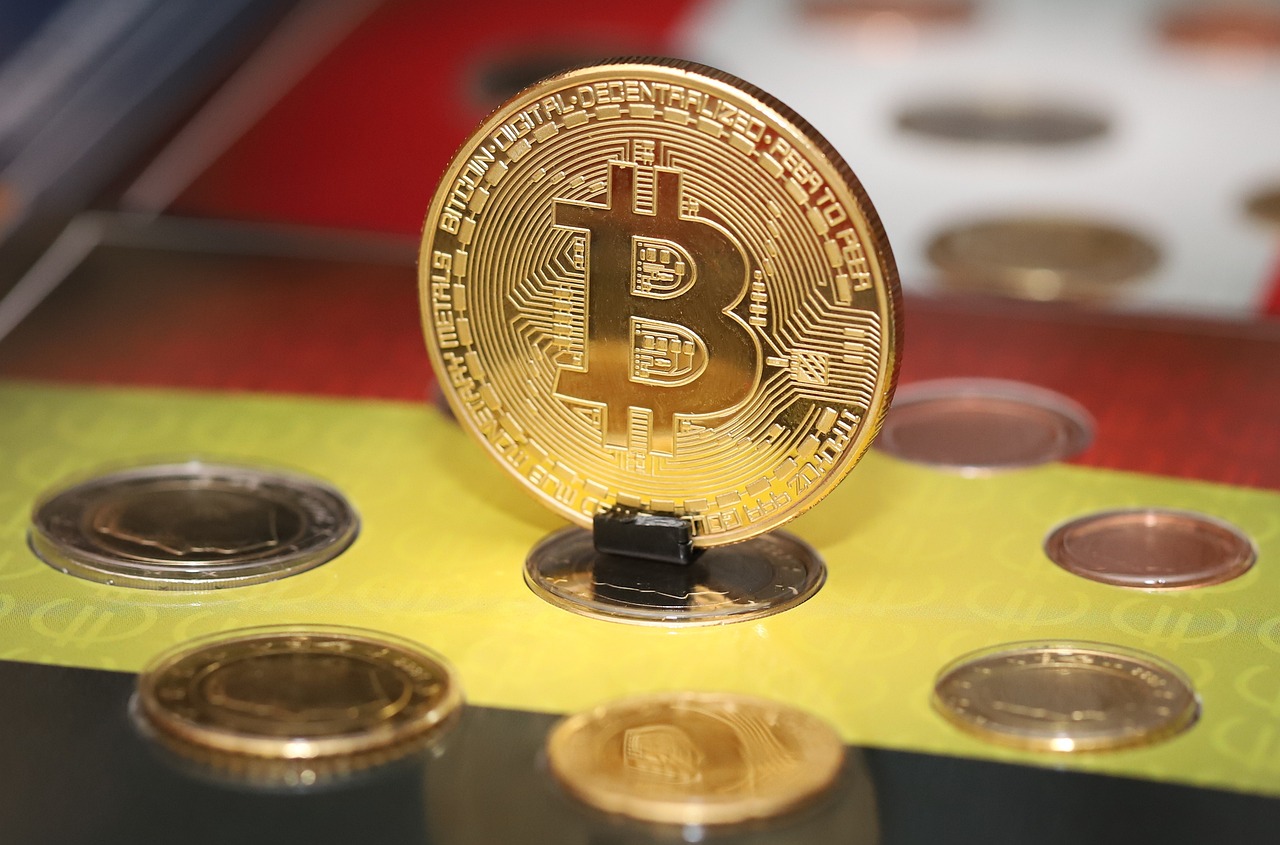
Technological Barriers
When we talk about the exciting world of quantum cryptography, it’s easy to get swept away by its potential. However, as with any groundbreaking technology, there are significant that stand in the way of its widespread adoption. One of the primary challenges is the requirement for specialized equipment. Unlike traditional cryptographic systems that can often run on standard computing hardware, quantum cryptography relies on sophisticated technology such as quantum key distribution (QKD)
Moreover, the infrastructure needed to support quantum cryptography is not yet universally available. Many organizations may find it difficult to implement the necessary quantum networks and devices, which are still in the early stages of development. This lack of infrastructure can lead to a fragmented approach to security, where only a handful of organizations can benefit from the enhanced protection that quantum cryptography offers. In essence, while the concept of quantum cryptography is revolutionary, the reality is that it is still in its infancy, and we need to build a robust framework to support its growth.
Another barrier is the complexity of integration. For organizations that already have established systems and protocols, incorporating quantum cryptography can be akin to trying to fit a square peg in a round hole. The integration process requires not only technical expertise but also a shift in the organizational mindset towards embracing new technologies. This can lead to resistance from stakeholders who may be hesitant to invest in something that seems daunting and untested.
To illustrate these challenges, consider the following table that highlights some of the key technological barriers:
| Barrier | Description |
|---|---|
| Specialized Equipment | Quantum cryptography requires advanced hardware that is not widely available. |
| Infrastructure | A lack of quantum networks limits the ability to implement secure communications. |
| Integration Complexity | Existing systems may not easily accommodate quantum cryptographic solutions. |
In conclusion, while the promise of quantum cryptography is indeed tantalizing, the technological barriers present significant hurdles that must be overcome. Organizations looking to adopt this technology will need to invest in new equipment, build the necessary infrastructure, and navigate the complexities of integration. Only then can we hope to unlock the full potential of quantum cryptography and secure our digital future.
- What is quantum cryptography?
Quantum cryptography uses the principles of quantum mechanics to create secure communication channels. - Why is quantum cryptography important?
It offers enhanced security features that traditional cryptographic methods cannot provide, particularly against cyber threats. - What are the main challenges of quantum cryptography?
The main challenges include technological barriers, high implementation costs, and the need for specialized infrastructure. - How can organizations overcome these barriers?
Organizations can invest in research and development, collaborate with quantum technology firms, and gradually integrate quantum solutions into their existing systems.

Cost Considerations
When it comes to implementing quantum cryptography, one cannot overlook the financial implications that come into play. It's not just about the technology itself; it's about the entire ecosystem that supports it. Organizations looking to dive into this cutting-edge field often find themselves grappling with significant initial investments. Imagine trying to build a state-of-the-art fortress to protect your digital assets—this is the level of commitment required to set up quantum cryptography systems.
First off, the specialized equipment needed for quantum cryptography is not cheap. Unlike traditional encryption methods, which can often be implemented with off-the-shelf software and hardware, quantum systems require highly specialized components such as photon sources, detectors, and advanced networking equipment. This is akin to needing a custom-built car for a race rather than just picking up a standard model from the dealership. The cost of these components can quickly add up, making the initial barrier to entry quite steep.
Moreover, once the equipment is in place, organizations must also consider the ongoing maintenance costs. Quantum systems require regular calibration and monitoring to ensure they are functioning optimally. This is not just a one-and-done deal; it’s more like having a high-maintenance pet that demands attention. The need for skilled personnel who understand the intricacies of quantum mechanics adds another layer of expense. Hiring or training staff with the necessary expertise can be a daunting task, both in terms of time and resources.
To help clarify the financial landscape, consider the following breakdown of costs associated with quantum cryptography:
| Cost Category | Estimated Cost |
|---|---|
| Specialized Equipment | $100,000 - $500,000+ |
| Installation and Setup | $50,000 - $200,000 |
| Training and Personnel | $30,000 - $100,000/year |
| Maintenance and Support | $20,000 - $50,000/year |
It's clear that the financial commitment required for quantum cryptography can be a significant hurdle for many organizations. While the long-term benefits of enhanced security may outweigh these costs, the initial financial burden can deter many from making the leap. Organizations must weigh the return on investment carefully, considering not just the technology's potential but also how it aligns with their overall goals and budget.
In conclusion, while the promise of quantum cryptography is indeed enticing, it comes with a hefty price tag that requires serious consideration. Organizations must be prepared to invest not just in the technology itself, but also in the infrastructure and expertise needed to make it work effectively. As the field evolves and technology becomes more accessible, we may see a shift in these cost dynamics, but for now, the financial implications are a critical factor to consider.
- What is quantum cryptography? - Quantum cryptography is a method of secure communication that uses the principles of quantum mechanics to protect data.
- Why is quantum cryptography so expensive? - The high costs are primarily due to the specialized equipment and the need for skilled personnel to operate and maintain the systems.
- Are there any alternatives to quantum cryptography? - While there are traditional encryption methods, they do not offer the same level of security against quantum computing threats.
Frequently Asked Questions
- What is quantum cryptography?
Quantum cryptography is a cutting-edge technology that utilizes the principles of quantum mechanics to secure data transmission. Unlike traditional cryptographic methods, which rely on mathematical algorithms, quantum cryptography ensures security through the fundamental laws of physics, making it nearly impossible for eavesdroppers to intercept information without detection.
- How does quantum cryptography enhance data security?
Quantum cryptography enhances data security by creating secure communication channels that are immune to eavesdropping. It achieves this through techniques like Quantum Key Distribution (QKD), which allows two parties to generate a shared, secret key used for encrypting messages. If a third party attempts to intercept the key, the quantum state of the particles used will change, alerting the parties involved.
- What are the current applications of quantum cryptography in research?
Currently, quantum cryptography is being applied in various fields, including telecommunications, computer science, and information security. In telecommunications, for instance, it provides secure channels for data transmission, while in information security, it helps protect sensitive data from cyber threats.
- Are there any real-world examples of quantum cryptography being used?
Yes! There are several real-world implementations of quantum cryptography. For example, companies and research institutions have successfully deployed quantum key distribution systems to secure communications over long distances, demonstrating the technology's effectiveness in protecting sensitive information.
- What challenges does quantum cryptography face?
Despite its potential, quantum cryptography faces several challenges. Key among these are technological barriers, such as the need for specialized equipment and infrastructure, and cost considerations, which include high initial investments and ongoing maintenance expenses that may deter organizations from adopting this technology.
- What are the future prospects of quantum cryptography?
The future of quantum cryptography looks promising! As technology advances, we can expect more secure communication networks and protocols to emerge, making it easier for organizations to adopt quantum cryptography and enhance their data security measures.



















